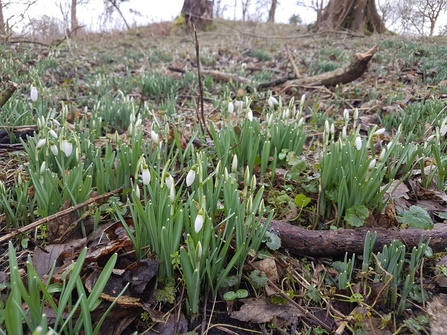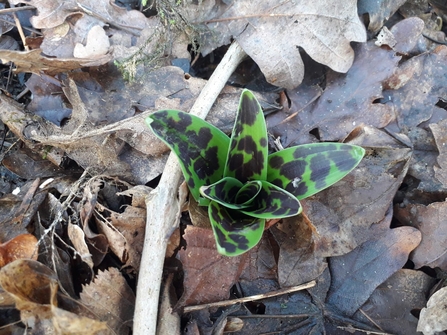A warm welcome for our new recruit
Our British white cattle were very excited to welcome Mayflower - a new addition to our conservation grazing team.
Early purple orchid at Bradfield Woods - Alex Lack
Our British white cattle were very excited to welcome Mayflower - a new addition to our conservation grazing team.
Although exploited by humans for many generations for sedge, reeds and peat, Suffolk’s valley fens like Market Weston remained largely intact until the 18th century when river engineering and drainage started to shape the valleys. Bit by bit the fens became fragmented, and the rise of intensive agriculture soon left a once connected and rich wetland as isolated fens, strung like a beautiful necklace around the throat of north Suffolk. On a site check this week, Debs Crawford, Valley Fens Assistant, found some gems of her own – emerging snowdrops in full display, nestled amongst the scrubby fringes. Debs said, ‘A sign that the natural world is starting to emerge from its winter slumber and help raise our spirits!’

Snowdrops at Market Weston Fen - Debs Crawford
Alex Lack, Assistant Bradfield Woods Warden, discovered another welcome sign of life burgeoning forth this week – the unmistakable glossy and dark green leaves of the early purple orchid. With its dark spots and rosette shape framed by the muted ground colour the early purple orchid is a plant worth seeking out in January before other vegetation gradually hides its delicate growth. Be sure to look out for their beautiful pinkish-purple spike which starts to come into flower during April.

Early purple orchid at Bradfield Woods - Alex Lack
Ben Calvesbert, Meadows & Heaths Warden, spotted some interesting landmarks at Rendlesham Forest which give us clues about the history of the site.
The North Suffolk team have been busy coppicing hornbeam, hazel, ash and silver birch at Reydon Wood this week. Coppicing is an ancient form of woodland management that involves repetitive felling on the same tree stump near to ground level. This allows shoots to regrow from that main stump which is also known as a coppice stool. Coppicing an area or compartment of woodland allows more light to the woodland floor, encouraging regrowth of a wide range of flora including the trees themselves, with knock-on associated benefits for other wildlife. Rotating this cutting practice across the woodland maximises age structure and allows for successional stages to create all important ‘edge’ habitat.
The team are always mindful of trampling on or disturbing wildlife during habitat management work, and downed tools to move a frog which emerged from the leaf litter.
Wangford Warren is a living example of the sheer diversity of habitats that Suffolk has to offer and a unique chance to see the inland sand dunes that once washed across this part of the county. The reserve, which is located in the far west of the county, is a snapshot of a past landscape, but these 38 acres are far more than just a relic.
Joe Bell-Tye, West Suffolk Reserves Assistant, regularly checks the reserve and said ‘The panorama of mounds and dunes – now stabilised by sand sedge – together with grazed grass and open disturbed soil are home to several rare specialist plants and animals. Unusual solitary wasps and bees burrow into the bare sand while ground beetles roam a surface that is still patrolled by groups of rabbits.’
Wangford Warren is also only one of two inland sites in Britain that sustains the beautiful grey hair-grass and supports other rarities such as shepherd’s cress, bearded fescue and beautiful reindeer moss.
There is restricted access to the reserve between months of September-February only. Please contact lackford.reserve@suffolkwildlifetrust.org to arrange a visit.